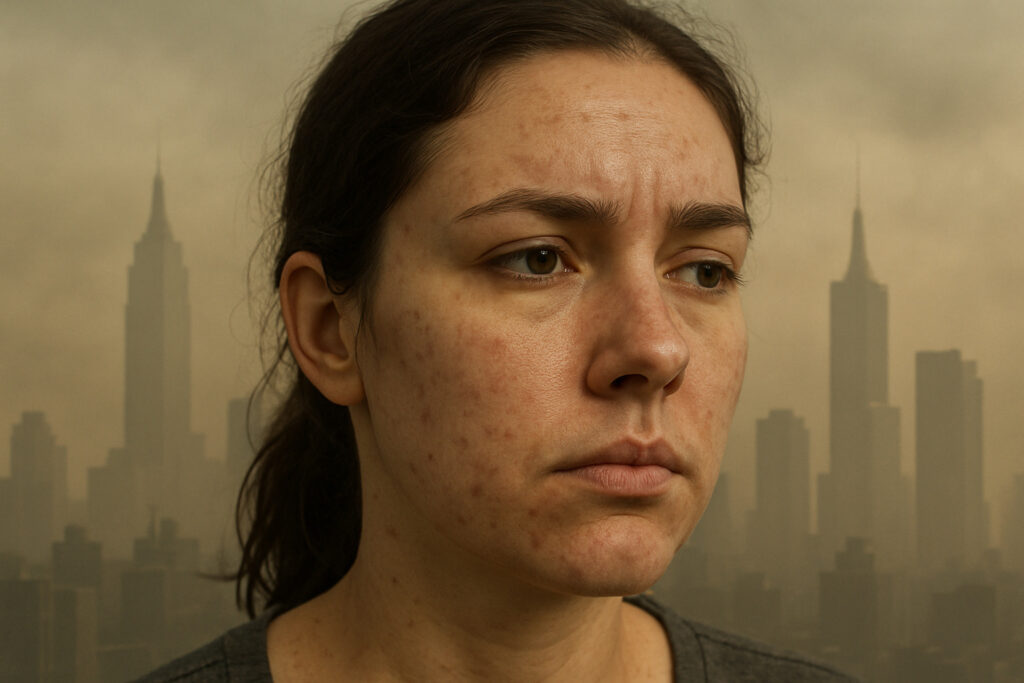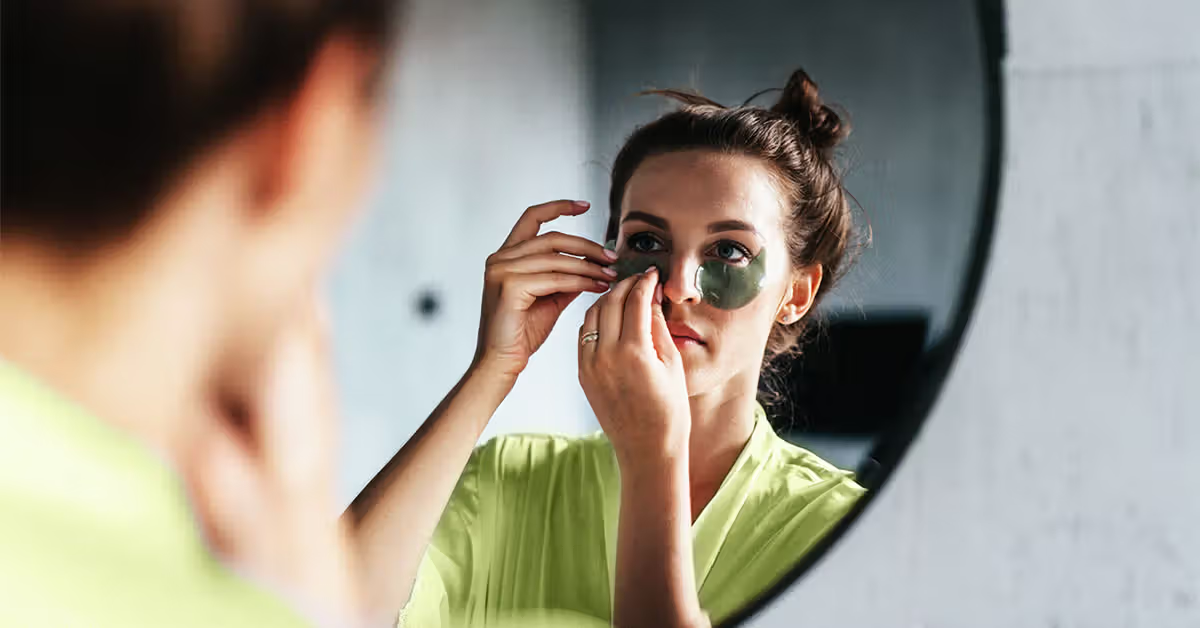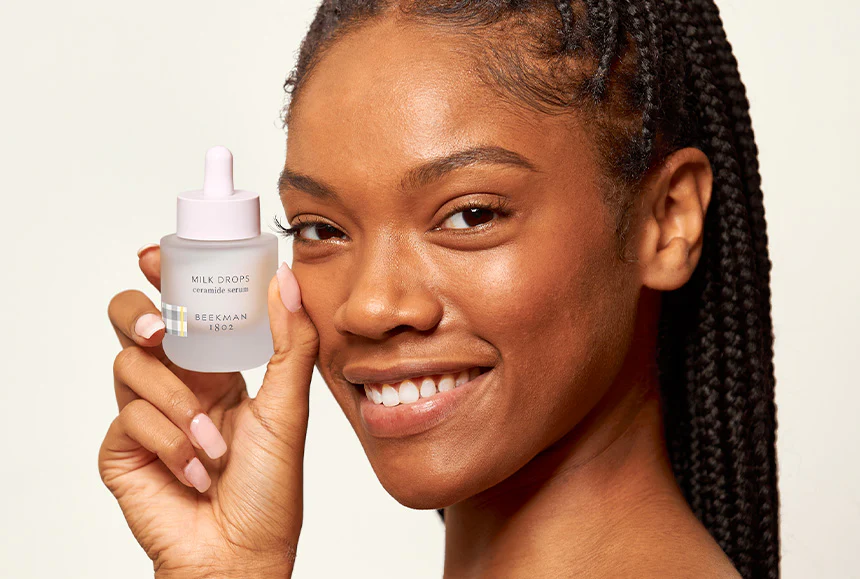The Invisible Threat: How Pollution Damages Your Skin
An anti-pollution skincare routine is essential for protecting your skin from environmental damage. If you’re looking for a quick answer, here’s what you need to know:
Quick Anti-Pollution Skincare Routine:
1. Double cleanse (oil-based then water-based cleanser)
2. Apply antioxidant serum (vitamin C, E, or ferulic acid)
3. Moisturize with barrier-supporting ingredients (ceramides, niacinamide)
4. Finish with SPF 30+ sunscreen (preferably mineral-based)
5. At night: Add exfoliation 2-3 times weekly and a detoxifying mask once weekly
These days, we’re all exposed to pollution – whether you live in a busy city or a seemingly clean suburban area. The air around us contains tiny airborne particles, heavy metals, cigarette smoke, car emissions, and even indoor pollutants that can wreak havoc on your skin.
A 2018 review published in the Journal of Investigative Dermatology linked toxic air with premature skin aging, noting that pollution generates free radicals on the skin’s surface. These free radicals break down collagen and elastin, weakening your skin’s barrier function and leading to sensitivity, pigmentation, dullness, and accelerated aging.
Think of it this way: your skin is your first line of defense against the environment. Without protection, pollution particles as small as 2.5 micrometers (known as PM2.5) can penetrate your skin barrier, causing oxidative stress and inflammation.
The good news? With the right anti-pollution skincare routine, you can create a powerful shield against these environmental aggressors. A 2020 study found that regularly applying skincare antioxidants such as vitamin C, vitamin E, and ferulic acid prevented damage from pollution in laboratory settings.
Your skin deserves the same level of protection you’d give your lungs in a polluted environment. Let’s explore how to build that protection, step by step.

How Pollution Impacts Your Skin
When you hear “pollution,” you might picture dark smog hanging over a city. But the reality is much more complex—and far more concerning for your skin health.
Pollution isn’t just one thing. It’s actually a cocktail of different aggressors that attack your skin daily:
Particulate Matter (PM) includes tiny particles suspended in the air. The smallest ones—PM2.5 (smaller than 2.5 micrometers)—are especially troublesome because they’re so tiny they can actually penetrate your skin barrier.
Polycyclic Aromatic Hydrocarbons (PAHs) are toxic compounds lurking in vehicle exhaust, cigarette smoke, and industrial emissions. Think of these as silent skin agers that you breathe in and absorb through your skin every day.
Ozone at ground level becomes a major component of smog, while Nitrogen Dioxide from vehicles and power plants further compromises skin health. Even inside your home, indoor pollutants from cooking fumes, cleaning products, and air conditioning systems can damage your skin.
What makes this environmental assault particularly dangerous is how pollution teams up with UV radiation. Research published in 2017 found that sunlight actually amplifies the oxidative stress caused by pollution—they work together to accelerate skin damage.
“Pollution particles don’t just sit on the skin but penetrate the barrier and induce oxidative stress,” explains Dr. Barbara Sturm, a leading skincare expert. “This triggers a cascade of harmful effects.”
When your skin encounters pollution, here’s what happens:
Your skin’s protective barrier breaks down as pollutants disrupt its natural lipid structure. This compromises your skin’s ability to retain moisture and keep irritants out.
Oxidative stress occurs as pollution generates free radicals that damage your cellular DNA and proteins, including collagen and elastin—the building blocks of firm, youthful skin.
Your skin responds to this invasion with inflammation, leading to redness, sensitivity, and worsening conditions like acne, eczema, and rosacea.
Hyperpigmentation develops because pollution activates the aryl hydrocarbon receptor (AhR), which stimulates melanin production, creating dark spots and uneven skin tone.
All of this leads to accelerated aging—the combination of collagen breakdown, dehydration, and chronic inflammation results in premature wrinkles, sagging, and loss of elasticity.
Research published in the National Center for Biotechnology Information has clearly linked air pollution exposure to visible signs of skin aging. One study following over 400 women found that those living in more polluted areas showed 20% more hyperpigmentation and significantly more wrinkles than those in cleaner environments.
The most troubling part? This damage happens silently, day after day, even when you don’t see any visible residue on your skin. That’s why an anti-pollution skincare routine isn’t a luxury—it’s absolutely essential for maintaining healthy skin in today’s environment.
Science-Backed Anti-Pollution Ingredients
Let’s talk about what actually works when it comes to protecting your skin from pollution. Building an effective anti-pollution skincare routine isn’t about fancy packaging or trendy ingredients—it’s about science-backed actives that genuinely shield and repair your skin.
Antioxidants: Your First Line of Defense
Think of antioxidants as your skin’s personal bodyguards, neutralizing those pesky free radicals before they can do any damage.
Vitamin C is truly the superstar here. Not only does it fight free radicals, but it also brightens dark spots and boosts collagen production. For best results, look for products with L-ascorbic acid at 10-20% concentration. It’s like a multitasking marvel for your face!
Vitamin E (also called tocopherol) works hand-in-hand with vitamin C—together, they’re up to 8 times more effective than when used alone. Talk about friendship goals!
Ferulic acid might not be as famous, but it deserves the spotlight. This plant-based wonder stabilizes vitamins C and E, making them work better and longer. A 2020 lab study showed that this power trio prevented pollution damage to skin cells.
Niacinamide (vitamin B3) is that friend who does a bit of everything—strengthens your skin barrier, calms inflammation, and evens out your skin tone. Research shows it can boost your skin’s natural ceramide production by up to 50%, giving you stronger defenses against environmental nasties.
Green tea extract and resveratrol (from red grape skins) round out our antioxidant dream team with their impressive ability to fight environmental damage.

Barrier-Strengthening Ingredients
Since pollution loves to compromise your skin barrier, we need ingredients that repair and fortify this protective layer.
Ceramides make up about half of your skin’s outer layer—they’re the building blocks of a healthy barrier. Adding them to your routine helps patch up damage and lock in moisture.
Hyaluronic acid is like a drink of water for your skin, attracting and holding up to 1,000 times its weight in moisture. Hydrated skin is resilient skin!
Peptides are the messengers that tell your skin to produce more collagen and strengthen its barrier. And fatty acids like squalane, shea butter, and jojoba oil restore balance to your skin’s natural lipid barrier.
Specialized Anti-Pollution Actives
Some clever ingredients have been specifically developed with pollution protection in mind:
Exo-P™ comes from marine sources and forms a protective mesh on your skin’s surface, trapping pollution particles before they can sneak in. Similarly, Alteromonas ferment extract creates a breathable film that shields against particulate matter.
Moringa seed extract contains special peptides that prevent pollution particles from sticking to your skin and can even remove heavy metals. Meanwhile, activated charcoal works like a magnet, drawing out toxins and impurities from your skin’s surface.
Physical Shields
Mineral sunscreens with zinc oxide and titanium dioxide create a physical barrier that not only blocks UV rays but also forms a shield against particulate matter. Double protection!
Don’t forget about prebiotics and probiotics—they support a healthy skin microbiome, which acts as yet another protective layer against environmental aggressors.
At Beyond Beauty Lab, we believe understanding the science behind your skincare is essential. If you’re curious to learn more about these ingredients, check out our guide on Learning About Skincare Ingredients.

The right combination of these pollution-fighting ingredients can make all the difference in how your skin responds to environmental stress. It’s not about using everything at once—it’s about finding the right balance for your unique skin needs.
Building Your Anti-Pollution Skincare Routine Step by Step
Let’s face it—pollution is everywhere, but your skin doesn’t have to suffer the consequences. Creating an effective anti-pollution skincare routine isn’t rocket science, but it does require a thoughtful approach to both protect and repair your skin. Think of it as building a fortress around your face, one layer at a time.
The secret? It’s all about using the right products in the right order. Let me walk you through creating a routine that actually works:
Step 1: Double Cleanse
The foundation of any anti-pollution skincare routine begins with getting your skin truly clean. Those tiny pollution particles are clingy little things!
Start with an oil-based cleanser, which works like a magnet for oil-soluble pollutants, makeup, and sunscreen. Massage it gently into your skin for about a minute—this isn’t a race! Follow up with a water-based cleanser to sweep away any remaining residue and water-soluble impurities.
I love that dermatologist Dr. Whitney Bowe pointed out: “A 2019 study using laser scanning microscopy found that the combined application of a barrier-enhancing serum and shield before exposure to carbon black particles, followed by cleansing, led to their elimination from skin samples.” In other words, proper cleansing really does remove those pesky pollution particles!
Step 2: Tone and Prep
Think of toner as priming your canvas. Apply an alcohol-free toner to rebalance your skin’s pH and prepare it for the good stuff to come. Look for formulas containing gentle hydrators and, if possible, some antioxidants for an extra pollution-fighting boost.
Step 3: Target with Serums
Here’s where the heavy hitters come in:
Apply an antioxidant serum first thing in the morning—vitamin C is your best friend here. It neutralizes free radicals before they can damage your skin. For maximum protection, look for formulas that combine vitamin C with vitamin E and ferulic acid. This power trio works together like the skincare version of superheroes.
Next, layer on a barrier-supporting serum with ingredients like niacinamide, peptides, or ceramides. These strengthen your skin’s natural defenses, making it harder for pollution to penetrate.
Step 4: Moisturize
Lock in all those wonderful active ingredients with the right moisturizer. During the day, opt for something lightweight with hyaluronic acid and ceramides. At night, switch to a richer formula that supports overnight repair with ingredients like peptides and fatty acids.
Step 5: Sun Protection (Morning Only)
Never skip this step! Apply a broad-spectrum SPF 30 or higher as your final morning layer. Mineral sunscreens with zinc oxide or titanium dioxide offer the bonus of creating a physical shield against both UV rays and pollution particles. It’s like putting up a force field around your face.
Step 6: Weekly Treatments
Think of these as your skin’s deep cleaning sessions:
Exfoliate 2-3 times weekly with gentle AHAs (like glycolic acid) or PHAs (polyhydroxy acids) to clear away dead skin cells and embedded pollution. If you have sensitive skin, PHAs are particularly gentle while still being effective.
Apply a detox mask once a week—clay or charcoal formulas work wonders for drawing out deeper impurities from your pores. Just make sure they also contain soothing ingredients so they don’t leave your skin feeling stripped.
Consistency is absolutely key with an anti-pollution skincare routine. Your skin faces pollution every single day, so it needs daily protection. For more details on layering your products correctly, check out our guide on Skincare Layering 101: The Right Order for Maximum Glow.

Morning Anti-Pollution Skincare Routine
Mornings are all about protection—creating a shield between your precious skin and the polluted world before you step outside. Here’s your game plan:
-
Gentle Cleanser: Start with a simple, hydrating cleanse. No need for the double cleanse in the morning unless you applied heavy treatments the night before.
-
Antioxidant Toner/Essence: Apply a hydrating toner with antioxidants to prep your skin for the day ahead.
-
Vitamin C Serum: This is your morning MVP. Apply 3-4 drops of vitamin C serum, ideally one containing that powerful trio of vitamin C, ferulic acid, and vitamin E. Studies show this combination can boost your skin’s defense against environmental damage by up to 8 times!
-
Hydrating Mist (optional): A quick spritz of antioxidant-infused mist can provide an extra layer of protection against pollution.
-
Niacinamide or Peptide Serum: Layer on a serum with niacinamide (around 5%) or peptides to strengthen your skin’s natural barrier.
-
Ceramide Moisturizer: Apply a lightweight moisturizer with ceramides to seal in hydration and reinforce your skin’s defenses.
-
Mineral Sunscreen SPF 30+: Finish with a broad-spectrum mineral sunscreen. As the FDA notes, “Broad-spectrum sunscreens with an SPF value of 15 or higher reduce the risk of skin cancer and early skin aging caused by the sun when used as directed.” For pollution-exposed skin, I recommend going with SPF 30 or higher.
-
Physical Barriers: Don’t forget that wide-brimmed hats, sunglasses, and protective clothing provide additional defense against both UV rays and pollution.
As Dr. Anjali Mahto wisely points out, “The combination of UV and pollution is particularly damaging to skin. UV radiation actually improves the harmful effects of pollution, making morning protection crucial.” She’s absolutely right—these environmental factors work together to damage your skin, so your protection needs to be comprehensive.
Pro tip: If you wear makeup, apply it after your sunscreen. Many makeup products with mineral pigments can actually provide an additional physical barrier against pollutants—a nice little bonus!
Night Anti-Pollution Skincare Routine
Nighttime is when your skin shifts into repair mode, making it the perfect time to focus on reversing pollution damage:
-
Oil Cleanser: Begin with a thorough oil cleanse to dissolve makeup, sunscreen, and oil-based pollutants. Take your time—massage for a full minute to ensure everything dissolves.
-
Water-Based Cleanser: Follow with a gentle water-based cleanser to remove any remaining residue. Look for soothing ingredients like chamomile or centella asiatica to calm your skin after a day of environmental stress.
-
Exfoliation (2-3 times weekly): Use a gentle chemical exfoliant with AHAs, BHAs, or PHAs to clear away dead skin cells and pollution particles from pores. PHAs like gluconolactone are particularly wonderful for sensitive skin since they provide antioxidant benefits while gently exfoliating.
-
Hydrating Toner/Essence: Apply an alcohol-free toner to rebalance pH and prepare your skin for treatments.
-
Treatment Serum: Apply a serum with niacinamide, peptides, or antioxidants to support your skin’s natural repair processes.
-
Retinol (2-3 times weekly): Alternate with your exfoliation nights. Retinol helps accelerate cell turnover and stimulate collagen production, helping to reverse pollution-induced aging. If you’re new to retinol, start with a low concentration (0.25-0.5%) and gradually increase as your skin adapts.
-
Rich Moisturizer: Apply a more substantial moisturizer than your daytime one, ideally containing ceramides, peptides, and antioxidants to support overnight recovery.
-
Sleeping Mask (1-2 times weekly): On nights when your skin feels particularly stressed or after heavy pollution exposure, apply an overnight mask with detoxifying ingredients like charcoal or antioxidant-rich botanicals.
Cosmetic chemist Ron Robinson explains it perfectly: “Nighttime is when the skin’s permeability increases, allowing for better absorption of active ingredients. This makes it the ideal time to apply your most potent anti-pollution repair ingredients.”
For more information on clean beauty products that can support your anti-pollution skincare routine, visit our guide on Clean Beauty Skincare.

Beyond Topicals: Lifestyle Habits & Environmental Tweaks
Your anti-pollution skincare routine doesn’t stop at creams and serums. At Beyond Beauty Lab, we believe beautiful skin comes from a 360-degree approach that includes what you eat, how you live, and the environment you create around yourself.
Nutritional Support
Your skin’s first line of defense against pollution starts from within. Think of antioxidant-rich foods as your internal skincare routine!
A colorful plate is your best ally against pollution damage. Berries, citrus fruits, bell peppers, and leafy greens deliver powerful antioxidants that fight oxidative stress from the inside out. When researchers studied the effects of diet on pollution response in 2021, they found something remarkable – people who ate primarily plant-based, antioxidant-rich diets showed significantly less oxidative skin damage after pollution exposure.
Omega-3 fatty acids deserve special attention in your anti-pollution diet. Found in salmon, walnuts, flaxseeds and chia, these essential fats strengthen your cell membranes and calm inflammation triggered by environmental toxins.
Don’t forget to hydrate! Those eight glasses of water aren’t just good general advice – proper hydration supports your skin’s natural detoxification processes and maintains a strong barrier against pollution. Keep a reusable water bottle with you as a reminder to sip throughout the day.
Environmental Controls
While you can’t escape pollution entirely, you can create cleaner spaces for your skin to recover:
HEPA air purifiers are worth the investment if you live in a high-pollution area. These mighty machines can trap nearly 99.97% of airborne particles as small as 0.3 microns – including many of the pollutants that damage your skin. Place them in your bedroom and workspace where you spend most of your time.
Nature provides its own air purifiers in the form of houseplants. Spider plants, peace lilies, and snake plants don’t just look pretty – NASA research shows they actively filter common indoor pollutants like formaldehyde and benzene from the air. Plus, they add a touch of calming greenery to your space.
Be strategic about timing. Pollution levels typically peak between 11am and 8pm, especially during rush hour in cities. When possible, schedule your outdoor runs or walks in the early morning or later evening when the air is cleaner. Several free apps can alert you to daily air quality, helping you plan accordingly.
A simple habit that makes a big difference? Remove your shoes at the door. This prevents you from tracking pollution particles throughout your home, creating a cleaner sanctuary for your skin.
Lifestyle Factors
Quality sleep isn’t called beauty sleep for nothing. During deep sleep cycles, your skin cells kick into repair mode, working overtime to undo pollution damage. Aim for 7-8 hours of uninterrupted rest to give your skin this crucial recovery time.
Don’t underestimate the skin-damaging effects of stress. Chronic stress triggers inflammation and weakens your skin barrier, making it more vulnerable to pollution. Simple practices like five minutes of deep breathing, gentle yoga, or a mindful walk can significantly reduce your stress response.
Regular exercise boosts circulation, helping deliver nutrients to skin cells while supporting natural detoxification. Just be smart about where and when you work out – choose indoor facilities or green spaces away from traffic on high-pollution days.
As Dr. Mark Hyman wisely notes: “What you put at the end of your fork is more powerful medicine than what you find at the bottom of a pill bottle. The same applies to skin health—nutrition is your internal anti-pollution defense system.”
Want to learn more about how your diet affects your skin? Explore our in-depth article on The Connection Between Gut Health and Glowing Skin.

Conclusion & FAQs
Let’s face it—pollution is part of our daily lives now, whether we like it or not. But the good news? You don’t have to accept its damaging effects on your skin as inevitable. With a thoughtful anti-pollution skincare routine, you can build a powerful shield that protects your skin day in and day out.
Think of your skincare routine as your personal environmental defense system. The key elements are surprisingly straightforward:
Double cleansing sweeps away those invisible troublemakers that settle on your skin throughout the day. Your antioxidant serums act as your skin’s personal bodyguards, neutralizing free radicals before they can cause damage. Ingredients like ceramides, niacinamide, and peptides rebuild and strengthen your skin’s natural barrier. And of course, that daily layer of SPF creates a physical shield between your skin and the world.
But true skin health is always an inside-out job. What you eat, how much water you drink, and even how you manage stress all play crucial roles in how your skin responds to pollution.
At Beyond Beauty Lab, we’re passionate about helping you steer skincare with evidence-based solutions that actually work. Protecting your skin from pollution isn’t just about vanity—it’s about the long-term health of your body’s largest organ.
For more inspiration on building an effective and planet-friendly beauty routine, check out our collection of Eco-Friendly Beauty Routines.
FAQ #1 – Can an anti-pollution skincare routine reverse existing damage?
Yes, there’s plenty of hope for improvement! While some damage (like deep-set wrinkles) might be stubborn, many pollution-related skin issues can be significantly improved with consistent care.
The skin has remarkable regenerative abilities when given the right tools. Ingredients like vitamin C brighten and even out tone, retinoids stimulate collagen production and cellular turnover, niacinamide strengthens your barrier, and exfoliating acids reveal fresher skin underneath.
Research backs this up—a 2019 study of women living in heavily polluted urban areas showed visible improvements after just one month of using a vitamin C and ferulic acid serum. The key is patience and consistency—give your anti-pollution skincare routine at least 4-8 weeks to show results before judging its effectiveness.
FAQ #2 – Do I need anti-pollution products outside big cities?
You might be surprised to learn that pollution isn’t just a big city problem. Even if you’re surrounded by trees instead of traffic, your skin still faces environmental challenges:
Rural areas contend with agricultural chemicals and dust. Your home itself harbors indoor pollutants from cooking, cleaning products, and even furniture off-gassing. And those pollution particles from distant cities? They can travel hundreds of miles on air currents.
As dermatologist Dr. Zoe Diana Draelos puts it: “Even in seemingly clean environments, the skin is exposed to numerous oxidative stressors.”
Instead of thinking about these products as exclusively “anti-pollution,” consider them “pro-skin barrier”—they’re supporting your skin’s natural defenses against whatever your environment throws at it, whether you live in Manhattan or Montana.
FAQ #3 – How often should I exfoliate to sweep away pollution particles?
Finding your perfect exfoliation balance is a bit like Goldilocks—not too much, not too little, but just right for your unique skin. Here’s a helpful starting point:
If you have normal to combination skin, aim for exfoliating 2-3 times weekly with AHAs like glycolic acid. Those with oilier, acne-prone skin might benefit from BHAs like salicylic acid up to 3-4 times weekly. If your skin runs dry or sensitive, stick to once or twice weekly with gentle PHAs, which provide exfoliation without irritation.
The most important thing to remember? More isn’t better. Over-exfoliating damages your skin barrier—ironically making you more vulnerable to the very pollution you’re trying to combat. Start conservatively and listen to your skin. Redness, tightness, or unusual sensitivity are all signs to dial it back.
For physically removing pollution particles, gentle methods work best—konjac sponges, soft microfiber cloths, or weekly clay masks can all help draw out impurities without stripping your skin.
By tailoring your anti-pollution skincare routine to your unique needs and environment, you’ll build resilience that keeps your skin healthy and glowing—no matter what pollutants come your way. Your skin faces the world every day; giving it the right protection is one of the kindest things you can do for yourself.







